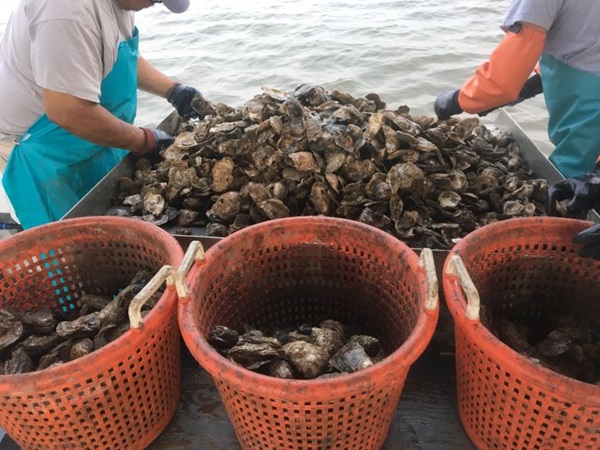ANNAPOLIS, MD—Maryland Governor Wes Moore this week announced that the state has met its commitment to restore five oyster tributaries in the Chesapeake Bay with the completion of the final project in the Manokin River.
The restoration projects, among the largest globally, have been highly successful in boosting oyster populations, creating habitat, and supporting economic growth.
A Decade of Restoration
Gov. Moore’s announcement marks the culmination of 14 years of large-scale oyster restoration. He highlighted the achievement as a model of government collaboration.
“This restoration supports our commitment to bringing the oyster population back in five rivers by 2025 and the larger effort to support the repopulation of oysters in the Chesapeake Bay, which has more than tripled in the past 20 years,” Moore said. “Our success represents the best of government collaboration to systematically address a complex environmental issue with real economic impact.”
Maryland Department of Natural Resources Secretary Josh Kurtz joined partners for one of the final deployments in the Manokin River. The Manokin sanctuary includes 455 acres of restored oyster reefs, where more than 1.39 billion hatchery-set oysters have been planted. The project was the last of the state’s five tributary-scale oyster restoration sanctuaries.
“The Manokin River sanctuary is the last phase of a decade-plus investment in oyster restoration,” Kurtz said. “Now, as we wrap up restoration here, we can see how far we’ve come.”
The other four completed sanctuaries are the Little Choptank River, St. Mary’s River, Harris Creek, and the Tred Avon River. Virginia also restored five tributaries in its portion of the Bay.
Ecological and Economic Benefits
Oysters are a keystone species in the Bay, essential for filtering water and providing habitat. The restoration sanctuaries are permanently closed to harvest, allowing oyster populations to grow undisturbed for their ecological benefits.
The state’s overall oyster population has tripled since 2005. A 2025 stock assessment found that the oyster population in the Maryland waters of the Bay increased from 2.4 billion to 7.6 billion over two decades.
The restoration has also provided a significant economic boost to Maryland’s commercial fishing industry. The average dockside value of oysters has increased by more than 300%, from about $3.5 million annually between 2005 and 2010 to more than $18 million in the last five years. Watermen are now harvesting an average of 475,000 bushels annually, compared to 116,000 bushels before restoration began.
Collaborative Partnerships
The restoration effort was a collaborative undertaking, with more than $92 million invested by the Maryland Department of Natural Resources and the federal government to restore 1,300 acres of oyster reefs in Maryland.
Key partners included:
- National Oceanic and Atmospheric Administration (NOAA): Provided funding, scientific expertise, and monitoring.
- U.S. Army Corps of Engineers: Built the foundation of reefs with hard substrates.
- University of Maryland Center for Environmental Science Horn Point Laboratory: Set billions of oyster shells with spat, or juvenile oysters.
- Nonprofit organizations: Distributed the young oysters.
“The completion of the Manokin River oyster sanctuary represents a historic achievement for Maryland and for oyster restoration globally,” said Ward Slacum, executive director of the Oyster Recovery Partnership.
Future Restoration Efforts
Maryland is already planning the next phase of restoration. The Department of Natural Resources has selected three new sites for large-scale oyster restoration in the Herring Bay, Nanticoke River, and Hoopers Strait sanctuaries.
Allison Colden, Maryland executive director for the Chesapeake Bay Foundation, said the completion of the Manokin project marks a momentous achievement, but also “the beginning of the next phase of oyster restoration.”
Photo via Maryland DNR


